
4 minute read
VITA MFT for everybody
VITA MFT FOR EVERYBODY! Function and aesthetics:
What else do you need for an economic denture solution?
Advertisement


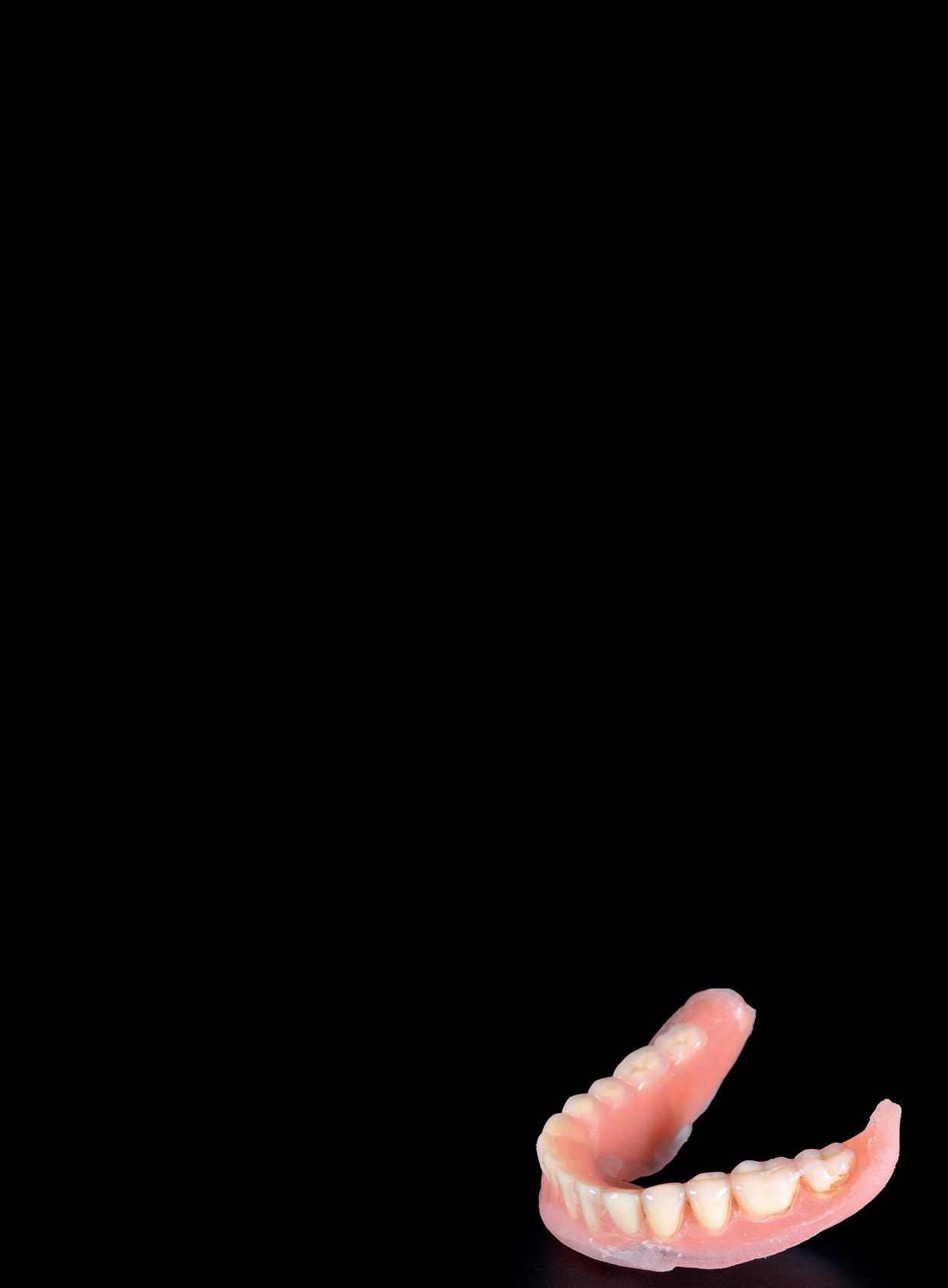
By Denturist Darius Northey (Buderim, Australia)
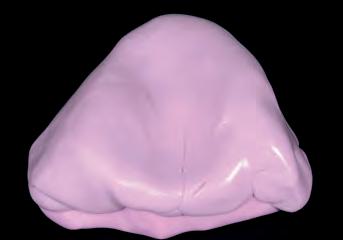
FIG.4 FIG.2
Do you wish to offer your clients a solid and economic prosthetic solution with efficient functional workflows and aesthetic results? That’s possible with VITA Multifunctional Teeth (MFT), which offer all of these features at the same time: reproducible and reliable rehabilitations for a fair price performance ratio.
SIMULATING MOTHER NATURE The morphology of VITA MFT Anterior is designed according to aesthetic rules. Its tooth axis, angle characteristics and dimension of the basal tooth neck simulate the shape of natural front teeth. The surface texture establishes a life-like appearance and the structural composition conforms the tooth anatomy. The well-arranged neck, dentin and enamel layers lead to an aesthetic play of light and colours with harmonic shade gradients and reflecting mamelon structures.
FUNCTIONAL REPRODUCIBILITY Due to the occlusal surface design, the centric position can easily be found. This leads to a reliable and time-saving reproduction of the function without extensive grinding. The posterior teeth can be used universally with any occlusion concept because of the multifunctional occlusal surface design. They standardize the workflow of the set-up and provide constant and solid results. This routine helps increase the general productivity.
NEW CENTRIC RELATION In the following case, the denturist Darius Northey (Buderim, Australia) demonstrates how efficient and aesthetic results can be created with the copy denture technique using VITA MFT. The teeth of the patient’s old, unstable dentures were severely worn. The vertical dimension was diminished and a malocclusion established. The dentures were stabilized with soft relining material in order to find a new, raised centric relation. After that, both dentures were copied with the help of a silicone matrix and articulated in the determined centric relation. COPY DENTURE TECHNIQUE The teeth of the copies were gradually reduced and then set. Mucodynamic impressions were taken with the new set-ups, which were poured and rearticulated after the successful clinical try-in. Finally, the rehabilitations were processed in polymer, finished and polished. The results were functional and aesthetic rehabilitations which had been manufactured efficiently and economically. The frail patient was very satisfied with the quick procedure and the outcome.
FIG.3
FIG.1: The lower denture with worn teeth after intraoral soft relining. FIG.2: A new centric relation was determined with the old dentures to raise the diminished vertical dimension. FIG3: Initial lab putty base with a land area for the duplication of the lower denture. FIG.4: The completed silicone matrix on the lower denture after isolating the land area with Vaseline.
FIG.1

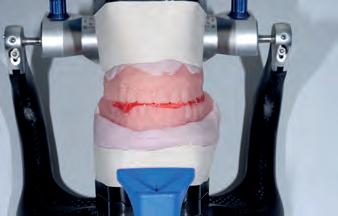
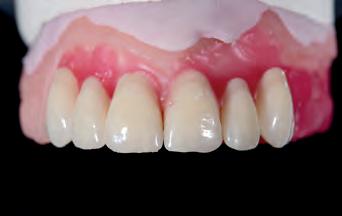
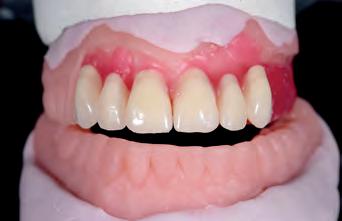
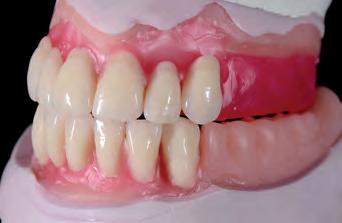
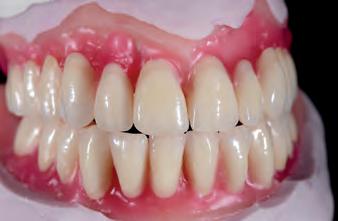

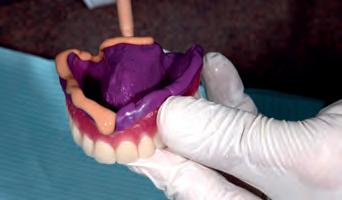


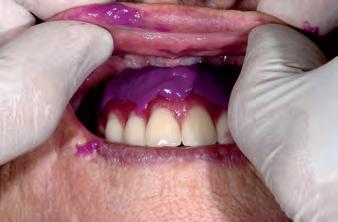
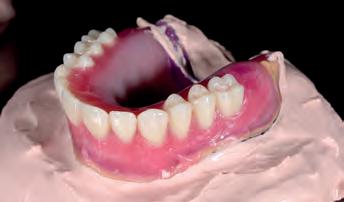
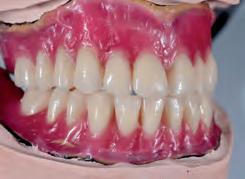

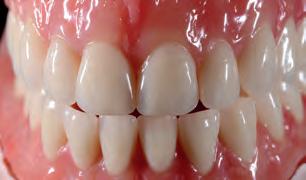
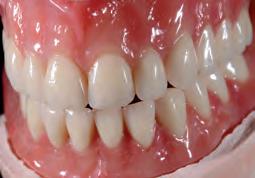
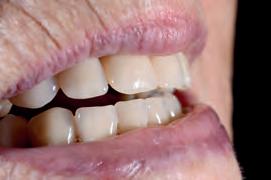
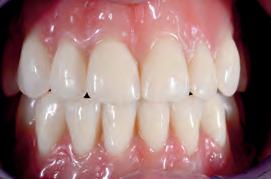
PHOTOS FROM TOP ROW (LEFT TO RIGHT) FIG.5: The VITA MFT Anteriors with their natural morphology and life-like play of light and colours FIG.6: The duplicated dentures were articulated according to the centric registration FIG.7: The teeth of the copy dentures were gradually reduced and then set FIG.8: The bite was raised two to three millimeters according to the new centric relation FIG.9: After the front set-up had been realized, the molar areas were reduced and replaced with VITA MFT Posteriors FIG.10: The completed set-up situation before the mucogingival anatomy was waxed FIG.11: During the phonetic try-in, the patient felt very comfortable FIG.12: The occlusion was checked and minimally optimized on the patient FIG.13: After the successful try-in, mucodynamic impressions were taken with the duplicated denture bases FIG.14: After a medium body impression, light body was applied for the next impression step FIG.15: The final mucodynamic impressions. Heavy body was additionally used on the lower set-up base FIG.16: Both mucodynamic impressions were poured with vacuum mixed stone gypsum FIG.17: The rearticulated and waxed set-ups could be transferred into polymer FIG.18: First occlusion check, after the wax set-ups were processed in polymer FIG.19: The final dentures in the articulator after high-gloss polishing FIG.20: The natural play of light and colours in the aesthetic zone FIG.21: Pink and white aesthetics harmonized. The lingualized occlusion offered reliable function FIG.22: The patient was very pleased with the aesthetic outcome of her new rehabilitations FIG.23: The new dentures looked very natural and harmonized well with their intraoral environment.










